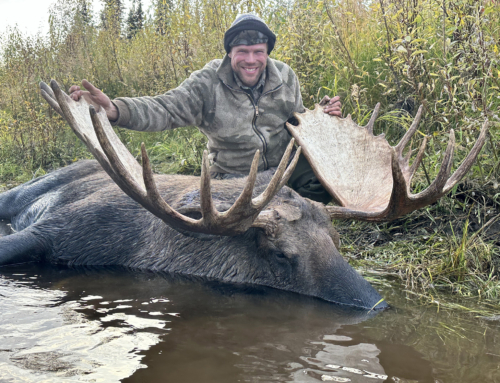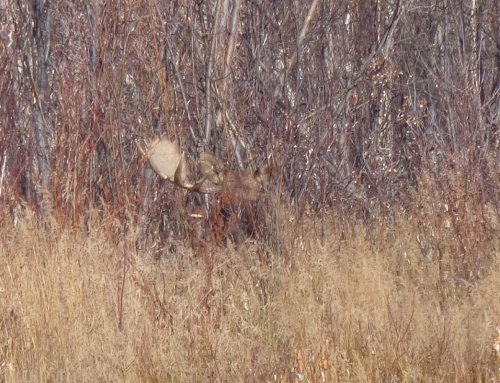When it comes to global big game hunting, the moose is the number one pick in Alaska. Annual harvesting of moose exceeds 7,000 of the state’s approximate 175,000 population of moose. Fall is the most popular season for moose hunting, and a ritual Alaskan beginning to advanced hunters.
ALASKA MOOSE HUNTING
Migrating throughout Alaska with exception of the Aleutian Islands moose are commonly found in the Southern interior and central region of the state. Moose population density ranges from one per thirty square miles, to five or more per one square mile. The moose habitat is most generally shrub or forest under an altitude of 5,000 feet.
Seasonal moose migrations beginning in summer when the animals graze while wandering meadows and pond areas. In Fall, the migration of the moose turns to more forested areas where aspen, birch, and poplar trees and other low hanging plant grow can be foraged, Fall is also breeding season, making the likelihood of spotting more than one moose higher.
Moose tend to rut during winter, feeding on willows, lowland birch, aspens, burns, and low shrubs about to become snow covered. Mountain moose are generally forced to migrate to valley levels, switching foraging to areas along creeks and rivers to subsist during the cold months. Spring is the calving season, and migrating moose are more sedentary in their activity due to the abundance of herbaceous growth.
In spite of common seasonal migration, some Alaskan moose only wander a few miles in a limited circumference annually. This makes Alaska moose hunting especially attractive. Hunting moose also requires near proximity of a hunting vehicle for transport of this heavy prize.
HUNTING RIGHTS
Moose hunters in Alaska observe guidelines to registration and hunting periods. Tier 1 subsistence hunts, known as Community Subsistence Harvest (CSH) hunts are available exclusively to Alaska residents ten years of age and older. Tier II hunts are subsistence hunts are also available to Alaska residents ten years of age and older.
Registration hunts are open hunts available to Alaska residents and nonresidents. Closure of registration hunts is generally a response to emergency order when a harvest total has already been met. Alaska does not limit the number of registration hunting permits.
When registration is under drawing rights provision, permit access is limited by application, and awarded by way of lottery. Drawing hunts control for the number of permits, and awards are taken care of on a first-come basis during the lottery. Application for Alaska moose hunting drawing rights is restricted to the last two months of the calendar year.










